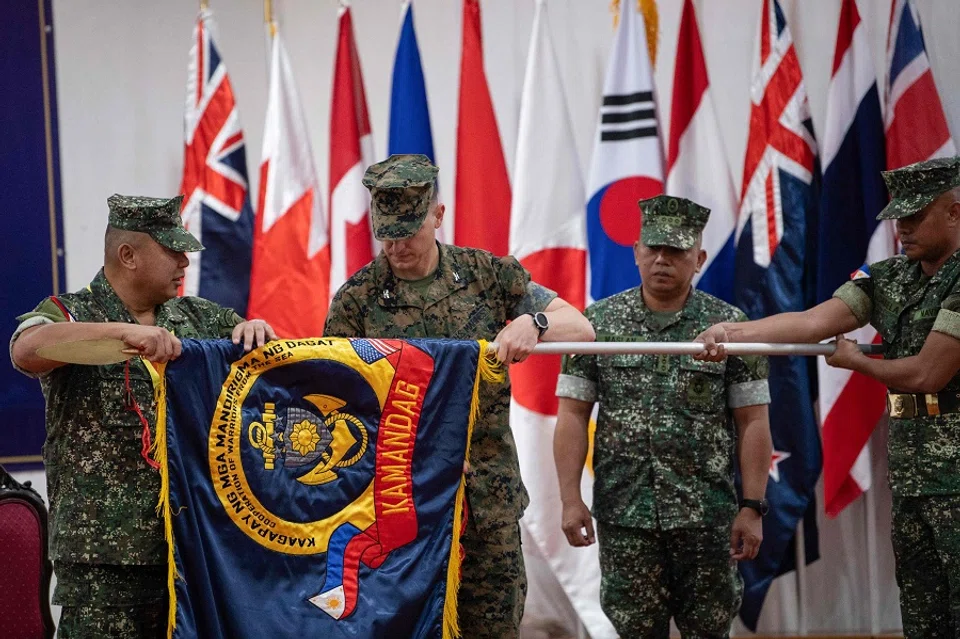Kamandag 2025: Why US-Philippines joint drills matter now
With China in mind, the Kamandag 2025 is another opportunity for the Philippines to enhance its maritime security capabilities through its defence linkages with like-minded partners, says Manila-based analyst Don McLain Gill.

The Philippine Marine Corps and the US Marine Corps have begun this year’s Kamandag, an acronym for “Kaagapay Ng Mga Mandirigma Ng Dagat Exercise”, which translates to “Cooperation of the Warriors of the Sea”.
The annual exercise is scheduled from 26 May to 6 June. It will also feature the participation of personnel from Japan, South Korea and the UK. Moreover, there would also be 13 observers from countries including France, Canada, Bahrain, Australia and The Netherlands.
Perceiving existential threat from China
The Kamandag replaced the former US-Philippines Amphibious Landing Exercise, which the former Philippine President Rodrigo Duterte ended after its 2016 iteration. While this move was Duterte’s way of appeasing China, the Philippine defence establishment maintained a strong position in maximising its capacity to defend Philippine sovereignty and sovereign rights with its ally and partners.
Consequently, rising from the ashes of the cancelled exercise was the first iteration of Kamandag, which began in 2017 and initially centred on counterterrorism and humanitarian assistance and disaster and relief (HADR) cooperation.
Manila has openly acknowledged the existential threat that China poses to the Philippines.

However, under the current administration of President Ferdinand Marcos Jr, Manila has openly acknowledged the existential threat that China poses to the Philippines. It has also endeavoured to reorient Philippine foreign and security policy to prioritise the security of the nation’s maritime zones through the operationalisation of the Comprehensive Archipelagic Defence Concept (CADC).
In this regard, along with national efforts such as expediting military modernisation, increasing presence operations, and signing maritime-oriented legislations, the Philippines has also been deepening and broadening its security cooperation with its sole treaty ally and other like-minded partners.
Deployment of US-made NMESIS anti-ship missile system
In this regard, Kamandag 2025 reflects this national objective. The ongoing exercise will include maritime key terrain security operations, defensive counter-landing live-fire drills, littoral manoeuvres, amphibious operations and HADR training. Additionally, it will encompass activities in the Philippine archipelago’s northern, southern, and western reaches and serve as a fulcrum for institutionalising a comprehensive defence network among like-minded partners.
In addition, with the Japan Ground Self-Defense Forces and the South Korean Marines participating together for the first time in the activities this year, the Philippines has a crucial opportunity to leverage its growing security relations in order to enhance joint preparedness and interoperability based on various crisis scenarios in complex environments.
Along with the deepening of cooperation, Kamandag 2025 will also witness the broadening of operations between the traditional allies. This year’s iteration features the deployment of the US-made Navy-Marine Expeditionary Ship Interdiction System (NMESIS) anti-ship missile system. The NEMESIS debuted in Philippine waters during this year’s iteration of the Balikatan or “shoulder-to-shoulder” exercise between the Philippines and the US, which was based on a full battle formation.
By increasing the frequency of training with high-end weapon systems, the Philippines will significantly improve its capability and technical expertise.

The NMESIS is expected to participate in the Maritime Key Terrain Security Operation, which aims to rehearse the defence of vital maritime terrain around the archipelago. By increasing the frequency of training with high-end weapon systems, the Philippines will significantly improve its capability and technical expertise.
Additionally, by familiarising itself with more advanced systems like the NMESIS, the Philippine military can more objectively assess what equipment to acquire based on the threat it faces. Philippine Navy Spokesperson Captain John Percie Alcos stated that the NMESIS was included in the Philippine military’s procurement wish list. Firing the NMESIS, which wasn’t done during Balikatan 2025, would add more significance to this exercise.
A message to China?
While official Philippine statements note that the sophistication of joint activities and the utilisation of advanced weapon systems are not aimed at any country, it cannot be denied that the past few years witnessed an increase in China’s aggressive activities within the exclusive economic zone (EEZ) of the Philippines in the South China Sea. Through its coast guard and maritime militia, China has also been expanding its escalatory activities.
Two years ago, the focus of contestation between the Philippines and China centred on a rusting World War II warship serving as Manila’s outpost, grounded in the Second Thomas or Ayungin Shoal, located 105 nautical miles west of the Philippine province of Palawan. However, in July 2024, China shifted its attention to the Sabina or Escoda Shoal, a low-tide elevation located 75 nautical miles west of the Philippine province of Palawan.
By ramming ships, using its water cannons, and leveraging its maritime militia in different parts of Philippine EEZ, China aims to slowly control and occupy the entirety of the South China Sea without the overt use of military force.
On 21 May, five days prior to the Kamandag 2025, a China Coast Guard vessel sideswiped and used its water canon against a Philippine Bureau of Fisheries and Aquatic Resources (BFAR) research vessel conducting a routine marine scientific research mission close to the Pag-Asa Island — a municipality in Palawan. In addition to endangering scientists onboard, this was the first time China carried out such aggressive manoeuvres close to the Pag-Asa, indicating a clear expansion of its adventurist ambitions within the Philippine EEZ.

By ramming ships, using its water cannons, and leveraging its maritime militia in different parts of Philippine EEZ, China aims to slowly control and occupy the entirety of the South China Sea without the overt use of military force. These acts have thus significantly altered the balance of power in the maritime space to Beijing’s advantage, making it even more difficult to negotiate anything close to a binding code of conduct that would restrain China’s expansionist interests.
Preparing for strategic turbulence
Therefore, the Kamandag 2025 is another opportunity for the Philippines to enhance its maritime security capabilities through its defence linkages with like-minded partners seeking to keep the Indo-Pacific’s maritime space free, open and rules-based. This becomes increasingly crucial, especially as China shows no signs of tempering its aggressive position.
As long as China believes that it enjoys escalation dominance over the Philippines, it will continue to push deeper into Philippine waters. Therefore, Manila and its partners need to maximise such collaborative activities as the Kamandag to forge a more robust network of deterrence and prepare for the possibilities of further escalation in the region.



![[Big read] China’s 10 trillion RMB debt clean-up falls short](https://cassette.sphdigital.com.sg/image/thinkchina/d08cfc72b13782693c25f2fcbf886fa7673723efca260881e7086211b082e66c)

